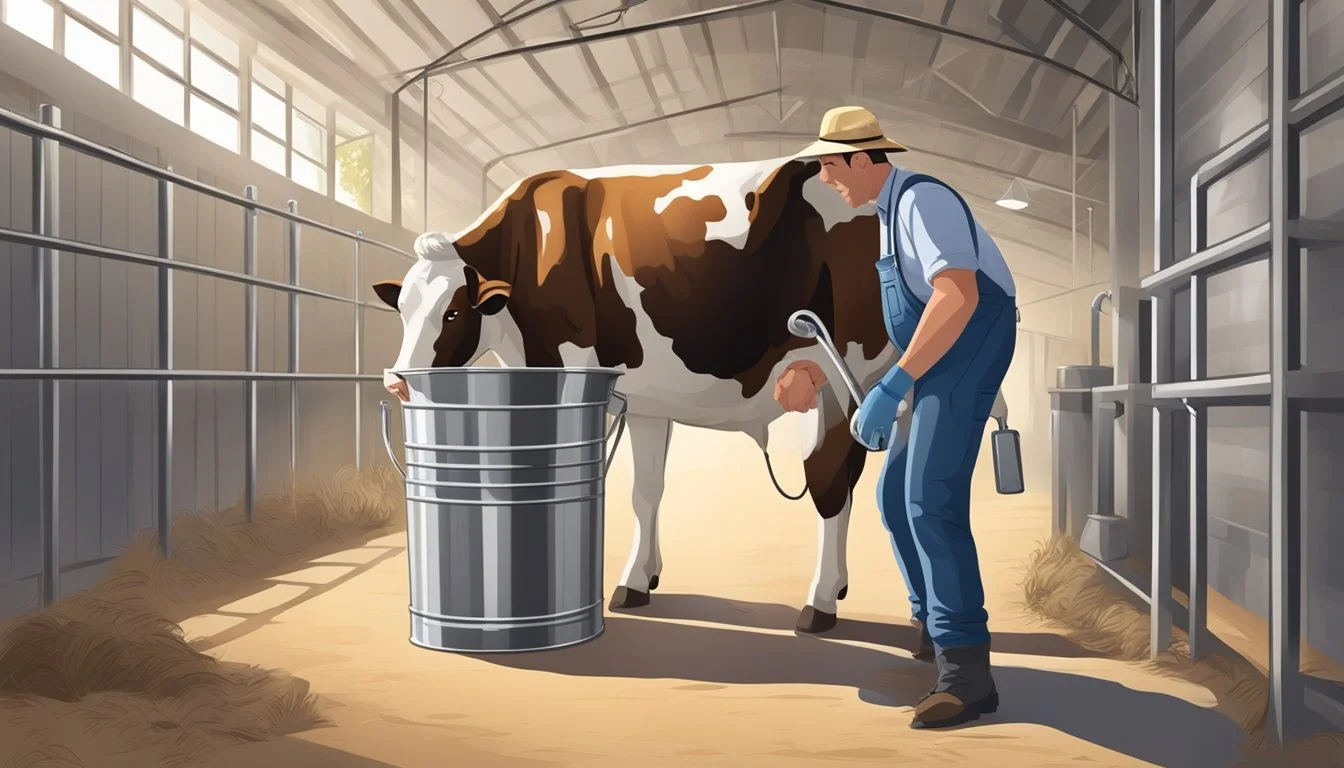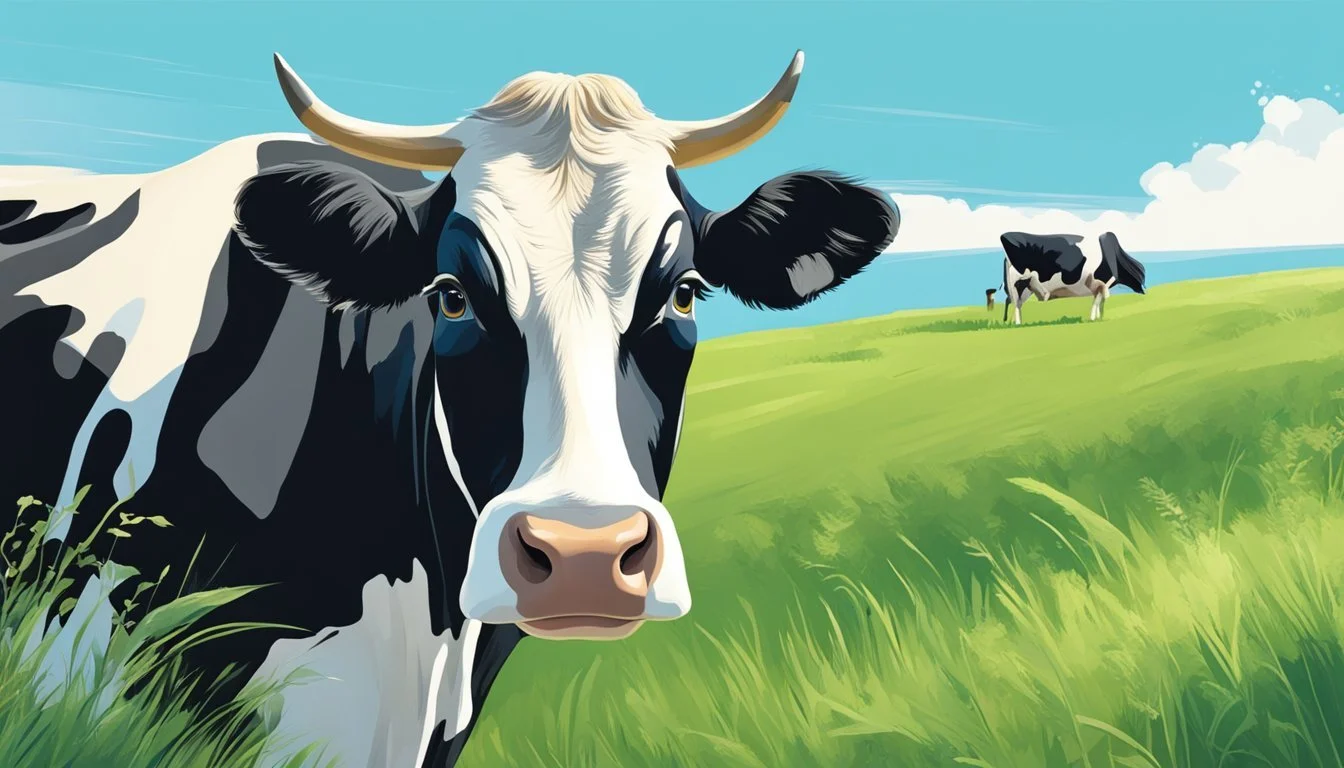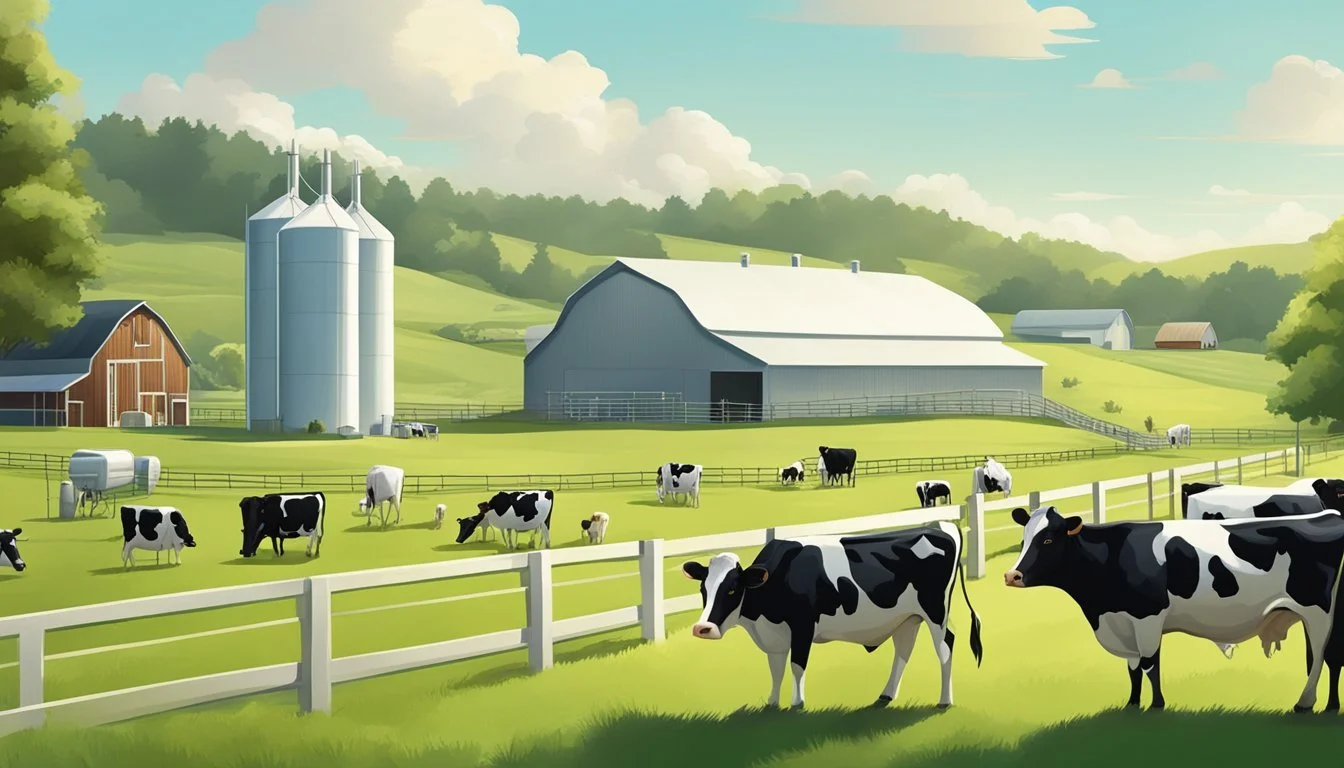How to Source Safe and Hygienic Raw Milk Locally
Your Guide to Responsible Purchasing
Raw milk, the unprocessed product straight from the cow, goat, sheep, or other animals, has a community of advocates who praise it for its nutritional benefits and fresh taste. However, potential health risks cannot be ignored, as raw milk can harbor harmful bacteria and other pathogens. Seeking out safe and hygienic sources for raw milk is essential for minimizing these risks and ensuring that the milk is of good quality and safe to consume.
Understanding the indicators of high-quality raw milk is the first step. A good raw milk farmer will offer a product that maintains a pleasant taste for at least 12-14 days when stored correctly, demonstrating proper handling and low levels of bacteria. Food safety measures, such as frequent testing and adherence to rigorous standards, are markers of a diligent raw milk producer who prioritizes the health and safety of their customers.
Consumers interested in purchasing raw milk are advised to identify producers with a strong commitment to safety practices. Farms listed with organizations like the Raw Milk Institute are an excellent starting point, as they have been trained in risk management and optimized production processes. This commitment to safety ensures that these farms provide a product that respects both the consumer's desire for raw milk and the importance of health and hygiene in food products.
Sourcing safe and hygienic raw milk locally is essential for individuals seeking to enjoy its potential benefits while ensuring their well-being. Understanding the history of milk pasteurization can provide valuable insights into traditional milk production methods, fostering an appreciation for the cultural significance of raw milk. When seeking raw milk, it's important to consider seasonal raw milk variations, as the natural shifts in the cows' diet can influence the milk's flavor and nutritional profile, enriching the overall experience.
Exploring the possibilities of cooking with raw milk can be a delightful culinary adventure, offering an array of wholesome and flavorful creations. Additionally, individuals interested in the potential benefits of raw milk for dental health and its impact on skin health should prioritize sourcing from reputable and trustworthy sources.
For expectant mothers, understanding the considerations related to raw milk pregnancy is crucial, and consulting healthcare professionals for personalized guidance is recommended. By prioritizing safe sourcing practices, individuals can access raw milk while being mindful of their health and well-being.
Understanding Raw Milk
Before exploring raw milk sources, it’s crucial to grasp what raw milk is, its potential health benefits, and associated risks.
Definitions and Differences
Raw milk refers to milk that comes directly from dairy animals—such as cows, goats, or sheep—without undergoing pasteurization, a process that kills harmful bacteria and pathogens using heat. In contrast, most commercially available milk is pasteurized, ensuring a consistent and safe product by eliminating the risk of foodborne illnesses.
Key Differences Between Raw and Pasteurized Milk:
Treatment: Raw milk is not heat-treated; pasteurized milk is heated to kill bacteria.
Flavor: Some consumers report that raw milk has a richer, creamier flavor.
Shelf Life: Pasteurized milk has a longer shelf life due to the elimination of bacteria that can cause spoilage.
Health Benefits and Risks
Benefits
Supporters of raw milk claim that it offers several health benefits, suggesting that it can contribute to:
Reducing the risk of asthma, allergies, and atopic eczema.
Strengthening the immune system, particularly when consumed in early life.
Note: Evidence is mixed and further research is needed to substantiate these claims.
Risks
While some advocate for the consumption of raw milk due to its perceived benefits, it carries significant health risks:
Infection: Raw milk can contain harmful germs like E. coli, Listeria, and Salmonella.
Vulnerable Populations: Infants, the elderly, pregnant women, and those with weakened immune systems are especially at risk for severe illness from raw milk consumption.
Documented Health Risks:
Diarrhea, stomach cramping, and vomiting.
Severe infections that may lead to hospitalization.
In understanding raw milk, one must weigh these health benefits and risks carefully, considering that the safety of raw milk depends on meticulous dairy farming practices, which include maintaining high hygiene standards and systematic health monitoring of dairy animals.
The Legality of Raw Milk
The sale and distribution of raw milk are governed by a complex patchwork of state and federal laws that can be challenging for consumers and producers alike to navigate.
State-Specific Regulations
In the United States, raw milk regulations vary significantly from one state to another. Each state possesses the authority to either permit or prohibit the sale of raw milk. Some states, such as Massachusetts, defer the power to local governments to establish their own raw milk policies, requiring adherence to certain sections if sales are allowed.
To illustrate:
Massachusetts: Local governments set raw milk laws, and sales must comply with specific sections.
Michigan: Under the Manufacturing Milk Law and Grade A Milk Law, only pasteurized milk and dairy products can be offered for sale.
Importantly, a consumer should verify the legality of raw milk within their local jurisdiction.
Federal Guidelines and Compliance
At the federal level, the Food and Drug Administration (FDA) prohibits the interstate sale of raw milk, although states can legalize its sale within their borders. The FDA strictly enforces these regulations to ensure public safety, as raw milk can harbor harmful pathogens.
Producers who sell raw milk must comply with various federal guidelines to prioritize consumer safety and public health. Despite these restrictions, some producers have developed stringent hygienic practices to offer higher-quality raw milk within the bounds of the law.
Identifying Safe Raw Milk Sources
Sourcing raw milk safely hinges on understanding the standards and certifications in play, alongside evaluating local farms for their practices. This section outlines the steps consumers can take to ensure their raw milk comes from reputable and hygienic sources.
Raw Milk Institute and Standards
The Raw Milk Institute (RAWMI) sets forth guidelines and standards to help ensure the safety of raw milk produced by registered farms. Consumers should seek out farms that are listed with RAWMI, as these have agreed to uphold the Common Standards for Producing Safe Raw Milk. These standards encompass everything from the care and feeding of the animals to the milking and handling of the raw milk.
Small herd share farms, which often supply raw milk to local communities, can also follow RAWMI's standards. Through adherence to strict hygiene protocols and good manufacturing practices, these farms demonstrate their commitment to producing safe, quality milk.
Local Farm Evaluations
Individuals should conduct their own evaluations of local farms to ensure that they maintain high standards of cleanliness and animal health. A good practice is to visit the farm in person to observe:
The overall cleanliness of the environment where animals are kept and milked
The health and well-being of the milking herd
Storage and handling procedures for the produced raw milk
Farmers who are transparent about their operations and willing to share their practices typically prioritize the safety of their products.
Quality Certifications
When evaluating raw milk sources, consumers should also look for quality certifications. Certifications from recognized authorities suggest that farms follow good manufacturing practices and meet standards for production and hygiene. Such certifications communicate a farm's commitment to safety and quality.
Consumers should enquire whether these farms have undergone third-party inspections and if they can provide evidence of compliance with food safety regulations. While raw milk is inherently riskier than pasteurized milk, certifications offer some assurance of a farm's dedication to minimizing health risks associated with its consumption.
Farm Hygiene and Milking Practices
In sourcing safe and hygienic raw milk locally, it is crucial to ensure stringent farm hygiene and consistent milking practices. This focus secures the health of the cows and the cleanliness of milk for consumers.
Animal Health Assessment
Routine Health Checks: Farmers should conduct regular health assessments of every cow, noting signs of illness or distress. Only healthy cows free from infections, especially those that might affect the udder such as mastitis, should be included in the milking process.
Vaccination and Disease Prevention: Alongside health checks, cows must receive up-to-date vaccinations and follow a preventative care program to maintain their health and prevent diseases that could compromise milk safety.
Milking Equipment and Facilities
Cleaning Protocols: Before and after each milking session, the equipment and facilities must be thoroughly cleaned and sanitized. All surfaces that come into contact with milk, such as milking machines and storage containers, require proper hygiene practices to prevent contamination.
Milking Procedures:
Pre-milking: Cleanse the cow's udder and teats with a suitable disinfectant, and dry using single-use towels to minimize the introduction of bacteria into the milk.
During milking: Use well-maintained, sanitized equipment to ensure gentle and efficient milking. Monitor the process to identify and address any hygiene issues immediately.
Post-milking: Store milk promptly at the right temperature to inhibit bacterial growth, and clean the milking area and equipment thoroughly once milking is complete.
Preventing Contamination
To safeguard the health of consumers, it is critical to minimize risks of contamination at every stage of the raw milk production process. This includes stringent pathogen testing, careful handling during bottling, and maintaining sanitary conditions in storage and transportation.
Pathogen Testing Procedures
Producers of raw milk must adhere to strict testing protocols to detect pathogens such as E.coli, Salmonella, and Listeria. They should conduct regular testing of their milk samples at certified laboratories. The testing frequencies should align with best practices in the dairy industry, ensuring any batch of milk complies with safety standards before it reaches consumers.
Initial Screening: Milk should be screened upon collection for general bacterial counts and specific pathogens.
Regular Follow-ups: Subsequent testing should be scheduled at regular intervals, in addition to randomized tests, to ensure ongoing compliance with health standards.
Bottling and Handling
The bottling process is a critical point where contamination can be introduced. Producers need to use sterilized bottles and maintain sanitary conditions to prevent the introduction of harmful microorganisms.
Pre-Bottling: Bottles should be sterilized using methods such as hot steam or chemical sanitizers.
During Bottling: Workers should wear clean gloves and use sanitized equipment to avoid contamination. The environment where bottling takes place must be kept free of potential contaminants.
Storage and Transportation
After bottling, raw milk requires careful storage and transportation practices to maintain its safety and quality.
Temperature Control: Milk should be stored at temperatures at or below 4°C (39°F) to inhibit microbial growth.
Transportation Conditions: Vehicles used for transportation must be clean, temperature-controlled, and well-maintained.
It is the responsibility of raw milk producers to implement and consistently execute these procedures to avoid health risks associated with contaminated milk.
Health Concerns and Pathogenic Bacteria
When sourcing raw milk, it is crucial to be aware of the potential health risks associated with pathogenic bacteria that can cause foodborne illnesses. These risks may be higher if the milk is not handled properly during production, storage, and distribution.
Common Illnesses Linked to Raw Milk
Consuming raw milk can expose individuals to a variety of pathogenic bacteria, leading to a range of illnesses. Notably, Campylobacter, Salmonella, Listeria, and E. coli are common culprits associated with raw milk consumption. Here's a breakdown of infections related to these bacteria:
Campylobacter: Often results in gastrointestinal symptoms like diarrhea and cramping.
Salmonella: Can cause fever, diarrhea, and abdominal cramps; severe cases may lead to hospitalization.
Listeria: Might lead to serious infection, particularly in pregnant women, newborns, elderly, and immunocompromised individuals.
E. coli: Certain strains are associated with severe stomach cramps, diarrhea, vomiting, and sometimes life-threatening hemolytic uremic syndrome.
Monitoring and Reporting Outbreaks
Authorities such as the Centers for Disease Control and Prevention (CDC) and the Food and Drug Administration (FDA) actively monitor and report outbreaks related to raw milk. In California and other states, local health departments play a significant role in investigating cases of illnesses like tuberculosis and listeria, which can be transmitted through contaminated raw milk. These agencies collate data on zoonotic diseases—illnesses transmissible from animals to humans—to inform public health actions and protect consumers from potential outbreaks.
Pasteurization vs. Raw Milk Advocacy
When discussing the sourcing of raw milk, one must consider the debate between pasteurization and raw milk advocacy. Each side presents claims regarding the microbiological quality and safety implications of their preferred method.
Benefits of Pasteurization
Pasteurization involves heating milk to a specific temperature for a set period to destroy harmful bacteria. This process, developed by Louis Pasteur in the 19th century, is proven to significantly reduce the microbiological risks associated with milk consumption.
Safety: Pasteurization kills pathogens such as Salmonella, E. coli, and Listeria, which can be present in raw milk, thereby reducing the risk of foodborne illnesses.
Microbiological Quality: It extends the shelf life of milk by reducing the number of spoilage organisms, ensuring a consistently safe product.
Advocacy for Raw Milk Consumption
Advocates for raw milk argue for the product's natural state, suggesting that it contains beneficial nutrients and enzymes that are diminished during pasteurization.
Nutritional Claims: Proponents believe raw milk retains a superior nutritional profile, with claims of improved digestibility and the presence of natural, beneficial bacteria.
Support for Local Farms: Advocacy groups often emphasize supporting small-scale, local raw milk producers known to apply meticulous hygiene in production to maintain quality.
The choice between pasteurized and raw milk involves weighing the importance of microbiological safety against the desire for minimally processed foods. Each individual must assess the potential risks and benefits based on reliable information and personal preference.
Safeguarding Children and Vulnerable Groups
Ensuring the safety of children and vulnerable groups is paramount when considering the consumption of raw milk. This section focuses on identifying the potential risks and allergy considerations associated with raw milk for these populations.
Potential Risks for Sensitive Populations
Sensitive populations, including children under 5 years of age, immunocompromised individuals, and the elderly, face a higher risk of experiencing severe illness from raw milk consumption due to the presence of harmful bacteria. Symptoms can range from gastrointestinal issues to more serious conditions. The CDC emphasizes that those with weakened immune systems are particularly susceptible to infections from raw milk.
Children: Possess developing immune systems and are less capable of fighting off infections.
Immunocompromised Individuals: Have lower resistance to the germs that raw milk may contain.
Elderly: May have weakened immunity and could experience more severe outcomes.
These groups should exercise caution and may want to avoid raw milk or ensure that any raw milk consumed comes from sources with stringent safety measures.
Raw Milk and Allergy Considerations
While some studies suggest a potential relationship between the consumption of raw milk and a reduced risk of asthma, allergies, and atopic eczema, these benefits are not universally recognized in the scientific community. For individuals with pre-existing allergies, the consumption of raw milk could present risks, including exacerbating symptoms.
Asthma reductions: Early life consumption of raw milk might bear an association with reduced risk.
Allergy concerns: The unprocessed nature of raw milk may contain allergens that affect susceptible individuals.
Parents considering raw milk for their children, especially those with respiratory infections or asthma, may seek out producers that adhere to the highest levels of hygiene to minimize these risks. However, it must be noted that health claims surrounding raw milk require careful scrutiny and consultation with healthcare providers.
Implementing Risk Analysis and Management
Implementing risk analysis and management is essential for ensuring the safety of raw milk. This process mitigates potential hazards and maintains high hygiene standards, protecting consumers from pathogens like verotoxin-producing Escherichia coli, Brucella spp., and Mycobacterium spp.
Developing a Risk Management Plan
A Risk Management Plan (RAMP) begins with a thorough assessment of the entire raw milk production process. Farmers are tasked with identifying critical control points—areas where the risk of contamination is highest—and establishing monitoring procedures.
Key steps include:
Assessment of potential hazards: including microbiological risks like verotoxin-producing Escherichia coli, Brucella spp., and Mycobacterium spp.
Outbreak data analysis: to inform prevention strategies and strengthen system weaknesses.
Protocol development: creating specific actions to control identified risks at each control point.
Regular review and adaptation of the Risk Management Plan are crucial to respond to new information and maintain efficacy.
Role of Hygienic Indicators
Hygienic indicators are integral to monitoring raw milk safety. They provide measurable feedback on the cleanliness of milk and help producers maintain control over production quality.
Key indicators:
Coliform count: A rolling three-month average of less than 10 coliforms per ml signals good hygiene practices.
Somatic cell count: Less than 5,000 cells per ml is a target average, indicating healthy lactating animals and proper milking procedures. -Producers must ensure raw milk is free from pathogens, including verotoxin-producing Escherichia coli, to meet safety standards.
By implementing these management and hygiene monitoring practices, raw milk producers can create a safer product for local markets.
Educational Resources and Training
Educational resources and training are crucial for ensuring the safe production and consumption of raw milk. Through structured programs and awareness campaigns, both producers and consumers can learn how to handle raw milk with care to maintain its benefits and minimize health risks.
Farmer Education Programs
Training for farmers is available through various programs aimed at teaching them the principles of producing hygienic raw milk. Organizations like the Raw Milk Institute offer mentoring and training to help farmers implement good manufacturing practices. This includes creating a Risk Analysis and Management Plan (RAMP) tailored to individual farms, encompassing strategies to manage potential threats to milk safety.
Hygienic Indicators: Training focuses on understanding and monitoring indicator bacteria such as coliforms and Standard Plate Count (SPC). These indicators help assess the cleanliness and overall quality of the milk produced.
Locations: Programs are available in numerous regions, including states like Virginia, where raw milk sales are legally regulated, ensuring broader access to education for farmers.
Consumer Awareness and Safety
Consumer education is key to fostering an understanding of raw milk's qualities and the importance of sourcing it safely. Educational outreach informs consumers about hygienic handling practices and the significance of purchasing from reputable sources that adhere to established safety standards.
Informational Resources: Consumers can access materials on raw milk nutrition, immune system benefits, and proper handling to make informed decisions.
Safety Practices: Consumers are taught how to identify hygienic indicators on product labels and the importance of proper storage and handling of raw milk to maintain its quality.
Through these educational resources and training programs, both farmers and consumers can play a role in promoting the safe handling and utilization of raw milk.
The Global Perspective on Raw Milk
Raw milk consumption and regulations are subjects of global significance, reflecting diverse approaches and scientific insights regarding their safety and health impacts.
International Raw Milk Regulations
United Kingdom: In the UK, sale of raw cow's milk is legal but heavily regulated. Farmers must adhere to strict hygiene standards, and raw milk sales are restricted to the farm premises or direct online sales.
South Africa: South Africa allows raw milk sales, but under regulations that safeguard public health. There's a framework in place that dictates hygienic milking and handling processes to mitigate risks.
Country Regulation Overview Sales Method United Kingdom Heavily regulated with strict hygiene Farm & online South Africa Hygienic milking, handling required Not restricted
Vorzugsmilch is a special designation in Germany and Austria for raw milk of even higher quality standards than regular raw milk.
Comparative Studies Abroad
Recent international studies have suggested health benefits associated with raw milk consumption. For example, they indicate a potential reduction in asthma and allergies, especially when consumed early in life. However, it is critical to evaluate such studies within the local health and regulatory contexts.
Studies have shown that even children from farms, when switching from raw to boiled milk, may lose some health benefits, such as a lower incidence of respiratory infections.
Entity Studied Findings Raw vs. Boiled Milk Possible reduction in respiratory infections
When considering goat's milk, it's noted for being easier to digest and an alternative for those sensitive to cow's milk. Different countries may have specific regulations or standards for goat's milk, often falling under broader raw milk regulations.










